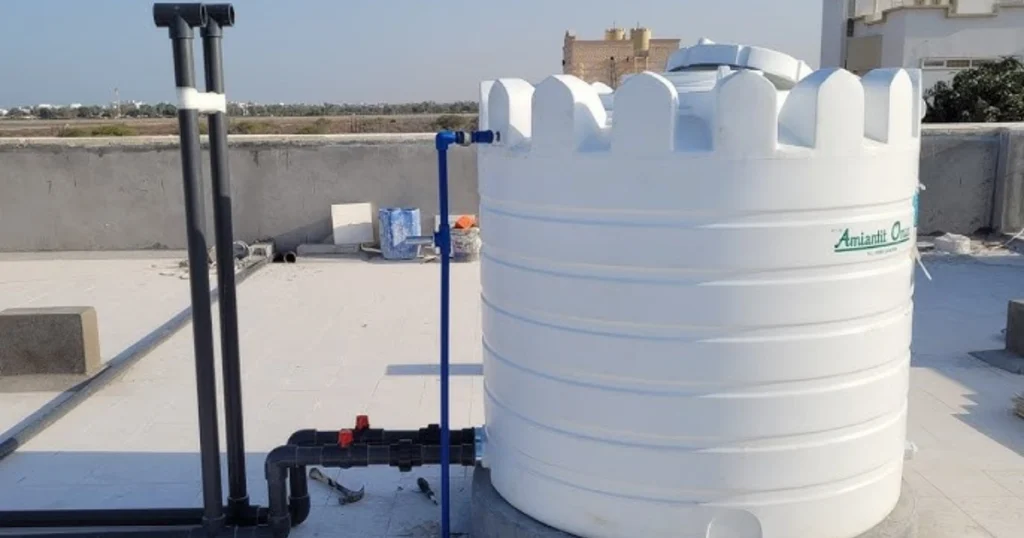Water conservation is no longer optional—it’s essential. Whether you’re managing a homestead, garden, or simply planning ahead, elevated tanks and cisterns are an efficient and eco-friendly way to store water using the power of gravity. But many homeowners and gardeners hesitate, unsure how to transport and install them correctly.
This guide will walk you through every step: from selecting the right model to lifting and securing it—without costly mistakes or safety risks.

🌍 Why Choose an Elevated Tank or Cistern?
An elevated water storage system relies on gravity to create water pressure—no need for electric pumps. This makes it perfect for:
- Irrigating your garden
- Providing emergency water supply
- Collecting rainwater efficiently
- Boosting water pressure naturally
If you’re already using methods like rainwater harvesting, elevated tanks are a natural next step. (Check out this guide on rain-saving tips from Secrets of the Green Garden.)
🧠 How to Choose the Right Tank or Cistern
Here are a few factors to consider before investing:
1. Tank Size
- 500–1000 liters: small gardens or household backup
- 1000–5000 liters: medium-size use
- 5000+ liters: large-scale or community needs
2. Material
- Plastic (polyethylene): Lightweight, UV-resistant, affordable
- Metal (galvanized or stainless): Long-lasting, durable, but heavier
- Concrete: For permanent installations, but harder to move
3. Usage Type
- Drinking water: food-safe, sealed, opaque tanks
- Garden/utility use: open-top or opaque poly tanks
4. Shape
- Vertical cylinders: better for gravity
- Horizontal tanks: more stable on low stands
5. Budget and Transport
- Remember: larger tanks might need professional transport or lifting tools
🧰 Tools & Materials Checklist
Here’s what you’ll need for safe transport and installation:
- 📦 Tank or cistern
- 🧤 Gloves
- 🛠️ Wrench and screw set
- 📏 Level
- 🧱 Concrete base or bricks
- 🪜 Ladder or scaffold
- 🛻 Pickup or flatbed trailer
- 🏗️ Rope, straps, or ratchet ties
- 🌧️ Rainwater diverter system (if applicable)
🪜 Step-by-Step Guide: Transporting and Installing an Elevated Water Tank
1️⃣ Prepare the Base
- Clear and level a solid foundation (gravel, concrete, or paving blocks).
- Make sure it’s strong enough to hold a full tank (1L of water = 1kg).
- For tall tanks, consider anchoring the base to avoid toppling.
2️⃣ Transport Safely
- Use a flatbed trailer or strong pickup truck.
- Secure with ratchet straps, ensuring no movement during transport.
- Protect plastic tanks from heat or sharp corners during travel.
3️⃣ Build the Elevated Structure
- Use metal stands, treated timber, or concrete platforms.
- Height: at least 1 meter for decent pressure (for showers/sprinklers).
- Use a spirit level to ensure balance—an uneven base leads to tipping.
4️⃣ Place the Tank Carefully
- Use multiple people or mechanical assistance to lift.
- Never roll the tank on its side, especially on rough terrain.
5️⃣ Install Pipes and Fittings
- Attach an outlet tap at the bottom.
- If using rainwater: install a first-flush diverter to keep the water clean.
- Use Teflon tape or silicone to seal all fittings.
6️⃣ Test for Leaks
- Fill the tank halfway, check all connections.
- Tighten fittings gently—don’t overtighten plastic parts.
7️⃣ Connect to Use
- Use hoses, gravity-fed drip lines, or garden taps.
- Optional: connect overflow pipe to another tank or soakaway.
⚠️ Common Mistakes to Avoid
- Skipping base preparation: uneven bases can crack your tank
- Overloading elevated stands: always calculate full water weight
- Installing in direct sun without UV protection
- Using untreated timber: leads to rot and instability
- Poor sealing of fittings: leads to leakage or pressure loss
💧 Benefits of Elevated Water Storage
- Saves electricity—no pump required
- Water always available—even during outages
- Encourages water saving and rainwater use
- Reduces your garden’s dependence on municipal water
🌦️ Seasonal and Regional Tips
In cold climates: insulate pipes and cisterns to prevent freezing
In dry zones: install large-capacity tanks with shade cover
In tropical regions: use mosquito-proof screens on tank openings
Windy areas: anchor tanks and stands securely against tipping
🔗 Internal Resource Highlight
Looking to build your own tank stand? Don’t miss this guide on DIY garden structures—perfect for creating a stable base for your cistern.
❓ Frequently Asked Questions
What is the best base for an elevated tank?
Concrete slabs or compacted gravel are ideal. The base must be level and strong enough to support full weight.
Can I install an elevated tank myself?
Yes, if it’s under 1000L. For larger sizes, use professional help or lifting tools.
How high should the tank be for good pressure?
For gravity-fed systems, 1 meter gives ~0.1 bar. For decent pressure, go 2 meters or more.
How do I prevent algae or pests?
Use sealed, opaque tanks. Add mosquito mesh and clean the system every 6 months.
What’s the difference between a cistern and a tank?
A cistern usually refers to large underground or ground-level containers, while tanks can be elevated and come in various materials.
🙌 Final Thoughts: Start Storing Smart
Installing an elevated water tank or cistern is one of the smartest and most sustainable upgrades you can make for your home or garden. With a bit of planning and careful installation, you’ll enjoy free water, better pressure, and peace of mind.
Have you installed a tank before? Got tips or questions? Share your thoughts below—we’d love to hear your experience! And don’t forget to share this article with friends who might benefit.


932901 565470Sweet web web site , super style and design , rattling clean and utilize genial . 899992
572875 850829Will you care and attention essentially write-up most with the following in my webpage in essence your site mention of this blog? 267996